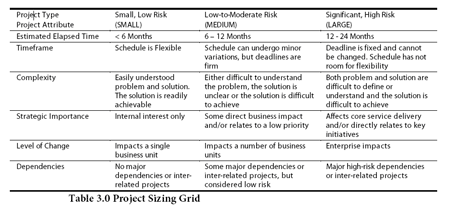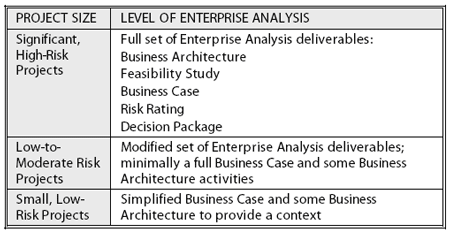Demystifying “Return on Investment” (ROI) and Business Benefit
One of my managers, Denny Brown, used to say to me, “It’s all analysis”. He was talking about projects, so I was confused. It took me years to figure out that he was talking about “end-to-end” execution of a project. First we analyze the business need, then we determine the requirements, then we design a solution, then we implement the solution, then we measure the results to analyze how well the solution is meeting the original need.
How many of us work on projects where we actually get to do the “measure the results?” And notice I said, “is meeting,” not “has met.” How many of us actually work with business teams who are prepared to track the performance of the business after we “toss the solution over the wall?”
The Business Requirements Document is often the first deliverable that a BA contributes to a project. If the project is following best practices, then there’s a Business Case document that feeds the BRD, and in that Business Case document there should be a description of the benefits anticipated from no longer having the problem that is the reason for writing the BRD. A key metric for business benefit is Return on Investment, or ROI.
We’ll look at what the components of ROI are so that when you start writing the business requirements for reporting on business benefits, you’ll know what is needed.
Return on Investment
Project funding committees always want to know when a project will “pay for itself”, or return 100% of the money spent to solve the problem. ROI is a time measurement, e.g., months, quarters, or years. To calculate annual ROI, or the number of years it will take to obtain 100% return on investment, you would use this equation:
(<business problem cost per year> + <project cost per year>) /
<anticipated savings or revenue gain per year>
For example, let’s say we have a business problem that costs $100,000 per quarter in lost productivity. The project to solve the business problem will cost $150,000 (completed in 1 quarter). The expected increase in recovering productivity plus an increase in revenue resulting from that productivity is $250,000 / quarter. The return on investment for this example is 100% in one quarter.
In our BRD, we want to write requirements that enable collecting the data that will be the source for the report that will show progress towards a 100% ROI in the expected time period. Just think, if the time period is one quarter, even hitting a 95% ROI is pretty darn good. Being able to show that the actual result was 101.45% ROI in one quarter is even better.
We BAs want to provide the evidence of benefits that will give our customer bragging rights. The Business Case must articulate estimated benefits that are measurable and assessed over time. In the BRD we want to write requirements that will validate that the benefits were in fact achieved.
Let’s take a look at these components in detail:
Cost of Business Problem
Most business groups have already figured out what the business problem is costing them. If the business context is manufacturing, then a problem can result in a product recall, which is both costly to administer, and has a huge impact on brand image, which results in a dip in revenue until the brand image is restored. Senior executives wish they could forget the business cost of a product recall – they shudder just thinking about it. If the business context is service delivery, then any delays in being able to provide the service to the customer give the customer an opportunity to find a vendor who delivers faster. Most product managers have the competitive information that enables them to calculate the cost of not being able to do business fast enough. Just ask the sales person who lost a major account to a competitor because her company couldn’t guarantee a particular service delivery time.
If the business problem cost can’t be measured in direct terms, e.g., loss of revenue, then use this heuristic method which focuses on productivity:
-
Number of people who spend time compensating for the problem
-
Number of hours each of those individuals spends per week compensating for the problem
-
Hourly rate for those individuals
-
For a quarterly estimate: use 12-13 weeks; For an annual estimate: use 50-52 weeks
If the business problem is poor data quality, then the business cost of the problem can be formulated based on the effort needed to compensate for the poor data.
For example, If 5 people each spend about 2 hours a week revising spreadsheets to correct the poor data quality, then an estimation of the quarterly cost of the problem would look like this:
5 people * 4 hours/week * $150/hour * 13 weeks/quarter = $39,000 / quarter
The hourly rate will vary according your industry. The $150 hourly rate is a burdened rate for high tech workers in Silicon Valley.
In our BRD, we want to describe the current business situation in a brief quantifiable manner. Something else to consider is the cost of the “work around” the business may be using right now while they are waiting for a real solution. What is the cost of the workaround? There may be some short-sighted people who will try to say that the work around is good enough, and there’s no need to spend the money for the real project.
Here’s where clever articulation of benefits and metrics really can save the day and prevent a short-term work around from becoming cast in concrete and causing a much larger headache in the future. Use the method above to quantify the cost of resources being used to perform the work around. As the volume of the work increases, will the work around be sustainable or will more resources be needed? When will it be more cost effective to solve the root problem?
Cost of the Project
Some projects use Net Present Value (NPV) to determine the cost of a business problem. NPV applies when the bulk of the cost savings generated from the project occur more than a year in the future. We aren’t going to cover NPV here.
The method provided here is an estimation of the cost of the project provides:
Convey the estimate of the project cost as a range, for example, < $US100,000, < $US100,000 - $US499,000, <$US500,000 - $US999,000, <$US1M - $US5M. Be sure to include service provider, e.g., IT and third party service providers, and costs the business customer may incur.
Our BRD should have ROI reporting requirement(s) enabling us to produce a report that shows the proportion of the investment recovered and the time periods.
In the BRD we need to articulate the following:
-
The estimated cost of this business problem
-
How we calculated the estimated cost of this business problem
-
The estimate cost range of the project is –
-
The estimated ROI period is
Anticipated Savings or Revenue Gain
To determine anticipated savings or revenue gain we need to indentify the business benefits. There are two types of benefits:
-
Direct benefits are quantifiable and therefore measurable.
-
Indirect benefits are not directly quantifiable, but still need to be assessed. It may be possible to estimate indirect benefits from other quantifiable measures.
Direct Benefits
Direct benefits are quantifiable benefits that will be appreciated as a direct result of the business problem being solved by the project being undertaken. Describe these benefits in measurable terms, as compared to the current business situation, such as:
-
Revenue – expected revenue increase quarterly/ annually
-
Cost Savings – projected savings in consolidating licenses/ hardware/ decommissioning of systems.
-
Cost Avoidance – cost not incurred if the problem is solved, e.g., doubling the number of resources needed. Cost avoidance (time savings, fewer errors) can result from automating workflow, if the alternative is adding headcount.
-
Productivity / Efficiency – Efficiencies that result in headcount reduction
-
Compliance – ability to demonstrate compliance with
Questions to ask for Direct Benefits are:
-
What metrics will be used to report on progress towards achieving the benefits and at what frequency (monthly, quarterly)?
-
How will each benefit be measured? Can data be collected automatically or will a manual effort be needed?
-
What is the length of the time anticipated to achieve the goal? (duration)
Indirect Benefits
Indirect benefits are efficiencies that result in time savings without headcount reduction. Indirect benefits may be realized indirectly as a result of the project being undertaken. They also include benefits that cannot be easily measured. Indirect benefits may require informal or subjective analysis, but are required.
Examples of efficiencies are:
-
Reduction of errors
-
Increased reporting capability
-
Improved ease of doing business
-
Enhanced customer experience
-
Improved Decision Making (decrease margin of error, …)
-
Increase Customer / Partner Satisfaction (identify high visibility pain points )
-
Extra time available to multitasking resources to focus on other areas of their jobs
Questions to ask for Indirect Benefits:
-
What metrics will be used to report on progress towards achieving the benefits and at what frequency (monthly, quarterly)?
-
What subjective criteria will be used for measuring success?
Describe how the cost of the problem being quantified now. Is there a way to associate a metric with the benefits by comparing the metrics to the business situation / current state? Or is the goal 100% improvement in one quarter? What is an appropriate frequency and time frames for reporting on changes in the cost of the business problem? Monthly? Quarterly? We need a statement that says something like this, “The progress made towards achieving the benefits will be measured by and will be monitored by on a basis.”
The BRD should have requirements for validating the benefits but we will not go into that here. Our focus is on how ROI is estimated, which helps us write a requirement for reporting on success, that is, the achievement of the benefits that were anticipated in the first place.
Summary
Return on Investment tells the business how long it will take for the project to pay for itself. In order to calculate that time period, we need to know cost of the business problem, project cost, and the benefit to the business articulated as anticipated savings or revenue gain.
The role of the BA as described in the BA BoK describes a role that has a strategic relationship with the business customer. The better you understand the business context, and can articulate the benefits to the business, the more strategically valuable you are to your customer (read “the more you are a Bad-Ass BA”). A BRD documents “what” the business needs. In addition, a BRD should include requirements for reporting on the success of the project. If our customer is expecting $8M uplift in revenue in the next fiscal year and 100% ROI in less than 12 months after project completion, then we want to build requirements into the project to generate a report that demonstrates the accumulation over time of that uplift, and, as claimed by the customer, that the 100% was achieved in less than one year.
Remember,” it is all analysis.”
Thank you, Denny Brown, President, Expert Support, Inc., for 26 years of guidance and encouragement. Thank you, Rebecca Burgess.
Cecilie Hoffman is a Senior Principal IT Business Analyst with the Business Analysis Center of Excellence, Symantec Corporation. Cecilie’s professional passion is to educate technical and business teams about the role of the business analyst, and to empower the business analysts themselves with tools, methods, strategies and confidence. Cecilie is a founding member of the Silicon Valley chapter of the IIBA. She writes a blog on her personal passion, motorcycle riding. She can be reached at
[email protected].


